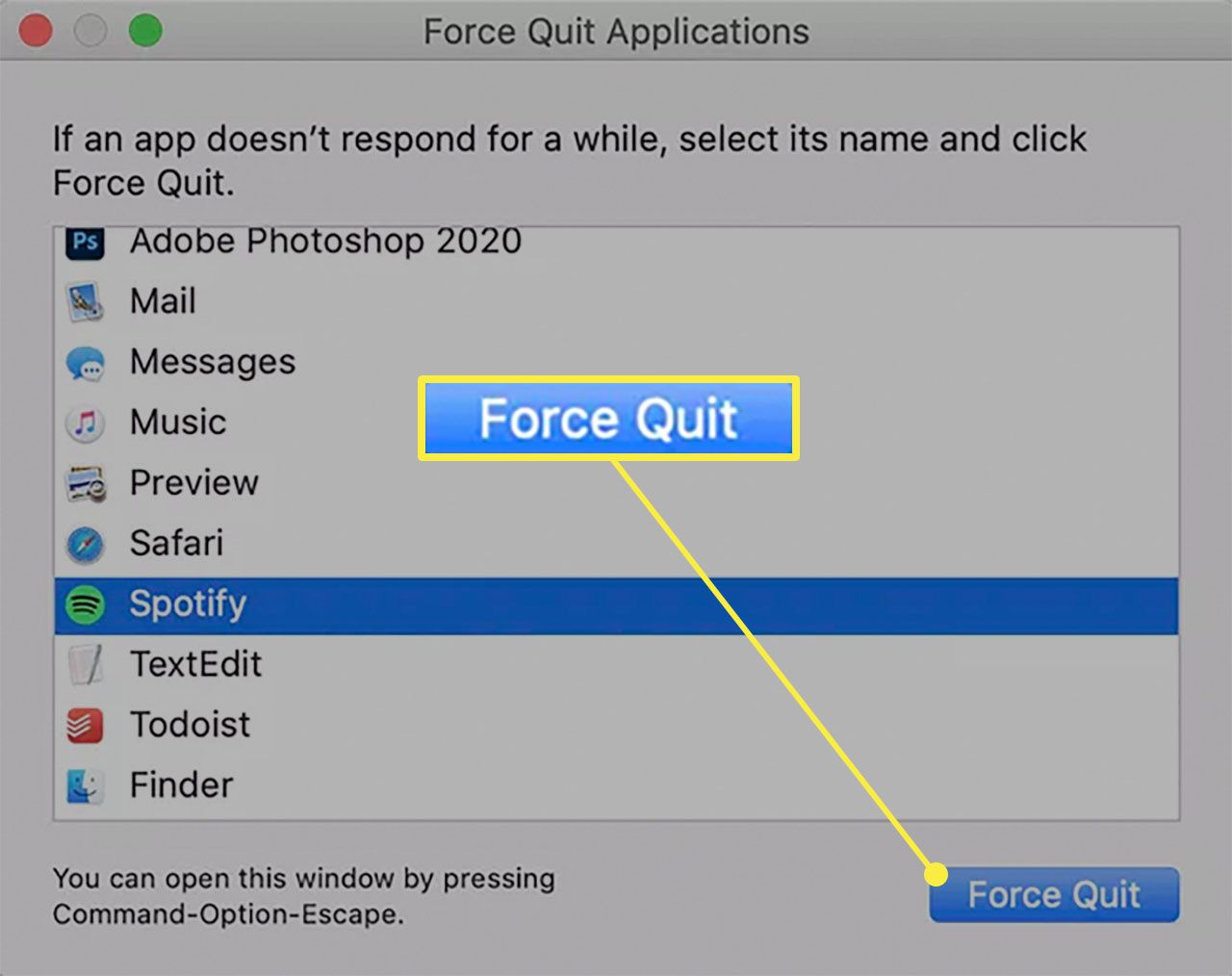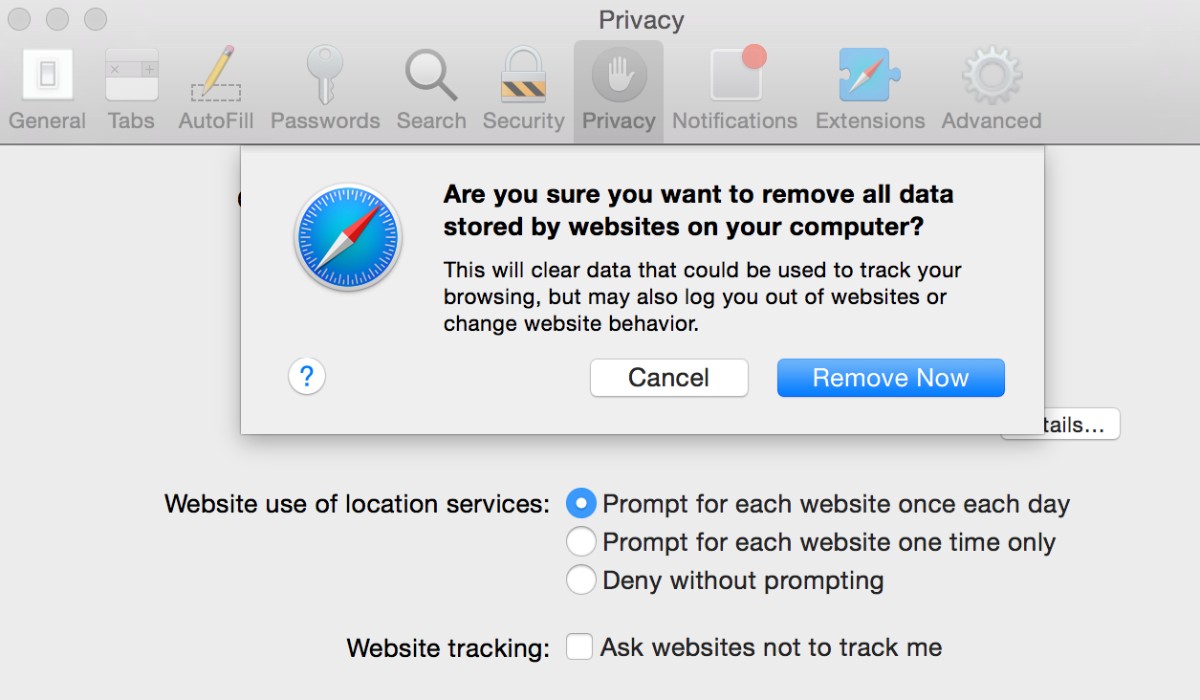Introduction
Safari, the default web browser for Mac, is known for its smooth performance and user-friendly interface. However, there are instances when Safari may become unresponsive or freeze, leaving users in a quandary. In such situations, force quitting the application becomes necessary to regain control and continue browsing without disruptions.
Understanding the need to force quit Safari is essential for Mac users, as it empowers them to troubleshoot unresponsive browser instances effectively. This article aims to provide a comprehensive guide on how to force quit Safari on a Mac, ensuring that users can navigate through such scenarios with ease and confidence.
By delving into the intricacies of force quitting Safari, users can gain valuable insights into troubleshooting unresponsive browser issues, thereby enhancing their overall Mac experience. Whether it's a temporary glitch or a persistent problem, having the knowledge to force quit Safari can be a valuable skill for Mac users, enabling them to swiftly address browser-related challenges and resume their online activities seamlessly.
In the following sections, we will explore the step-by-step process of force quitting Safari on a Mac, along with alternative methods to tackle unresponsive browser situations. By equipping users with these essential techniques, this article aims to empower Mac users to navigate through potential browser issues with confidence and ease.
Understanding the Need to Force Quit Safari
Safari, the default web browser for Mac, is renowned for its stability and seamless performance. However, despite its reliability, users may encounter situations where Safari becomes unresponsive or freezes unexpectedly. This can be attributed to various factors such as conflicting extensions, excessive memory usage, or issues with web pages or scripts. When Safari stops responding, it can disrupt the user's browsing experience and hinder productivity.
In such scenarios, understanding the need to force quit Safari becomes crucial. Force quitting is a troubleshooting technique that allows users to terminate unresponsive applications, including Safari, effectively resolving the issue and restoring normal functionality to the browser. By force quitting Safari, users can address instances of unresponsiveness, frozen tabs, or unexpected behavior, enabling them to regain control and continue their online activities without interruptions.
The need to force quit Safari arises when the browser becomes unresponsive to user input, fails to load web pages, or exhibits erratic behavior such as slow performance or unexplained crashes. In these situations, force quitting Safari can serve as a practical solution to address the underlying issues and restore the browser to a functional state.
Furthermore, force quitting Safari can be necessary when attempts to close the browser through conventional methods, such as clicking the close button or using keyboard shortcuts, prove ineffective. In such cases, force quitting becomes the go-to method for terminating the unresponsive browser instance and preventing it from consuming system resources unnecessarily.
Understanding the need to force quit Safari empowers Mac users to tackle unresponsive browser instances effectively. By recognizing the symptoms that indicate the necessity of force quitting, users can take proactive measures to troubleshoot browser-related issues and maintain a smooth browsing experience on their Mac devices.
In the subsequent sections, we will delve into the step-by-step process of force quitting Safari on a Mac, providing users with a comprehensive guide to address unresponsive browser situations confidently and efficiently. Additionally, alternative methods to force quit Safari will be explored, offering users a range of options to troubleshoot browser issues and optimize their browsing experience on Mac.
Step-by-Step Guide to Force Quit Safari on a Mac
When Safari becomes unresponsive on a Mac, force quitting the application can help resolve the issue and restore normal functionality to the browser. Here's a detailed step-by-step guide to force quit Safari on a Mac:
-
Accessing the Apple Menu: To initiate the force quitting process, start by clicking on the Apple logo located in the top-left corner of the screen. This action will open the Apple Menu, providing access to essential system functions and options.
-
Selecting "Force Quit": Within the Apple Menu, navigate to the "Force Quit" option, which is designed to terminate unresponsive applications. Clicking on "Force Quit" will prompt a window to appear, displaying a list of active applications and processes on the Mac.
-
Identifying Safari: In the "Force Quit Applications" window, locate and select "Safari" from the list of active applications. This step is crucial for targeting the unresponsive Safari instance and initiating the force quitting process for the browser.
-
Confirming the Force Quit: After selecting Safari, click on the "Force Quit" button located in the bottom-right corner of the window. This action will prompt a confirmation dialog to appear, verifying the decision to force quit Safari. Confirm the force quit by clicking on the "Force Quit" button in the dialog box.
-
Verifying the Force Quit: Once the force quit command is executed, Safari will terminate, effectively ending the unresponsive browser instance. Users can verify the successful force quit by ensuring that Safari is no longer listed in the "Force Quit Applications" window.
-
Relaunching Safari: With Safari successfully force quit, users can relaunch the browser by accessing it from the Applications folder or clicking on its icon in the Dock. Relaunching Safari allows users to start afresh, providing an opportunity to resume browsing activities without the previous unresponsiveness or disruptions.
By following these step-by-step instructions, Mac users can effectively force quit Safari when it becomes unresponsive, enabling them to troubleshoot browser-related issues and restore seamless functionality to their browsing experience. This method empowers users to take control of unresponsive browser instances and maintain a smooth and productive browsing environment on their Mac devices.
Alternative Methods to Force Quit Safari
In addition to the conventional method of force quitting Safari through the Apple Menu, Mac users can explore alternative approaches to terminate unresponsive browser instances effectively. These alternative methods provide users with additional options to address unresponsive Safari situations, offering flexibility and convenience in troubleshooting browser-related issues. Here are some alternative methods to force quit Safari on a Mac:
Using Keyboard Shortcuts
Mac users can leverage keyboard shortcuts to force quit Safari swiftly. By pressing "Option + Command + Esc" simultaneously, the "Force Quit Applications" window will appear, allowing users to select Safari and initiate the force quitting process. This method provides a quick and convenient way to terminate unresponsive browser instances without navigating through multiple menus, streamlining the troubleshooting process for users.
Activity Monitor
The Activity Monitor, a built-in utility on Mac, offers a comprehensive view of system processes and applications, enabling users to force quit unresponsive programs, including Safari. To access the Activity Monitor, users can navigate to the "Applications" folder, open the "Utilities" subfolder, and launch the Activity Monitor application. Within the Activity Monitor, users can locate Safari in the list of active processes, select it, and choose the "Quit Process" option to force quit the unresponsive browser instance effectively.
Terminal Commands
For users comfortable with command-line interfaces, Terminal provides a powerful alternative for force quitting Safari. By launching the Terminal application and entering the appropriate command to identify and terminate the Safari process, users can force quit the unresponsive browser instance with precision and control. While this method requires familiarity with Terminal commands, it offers a versatile approach to troubleshooting unresponsive applications, including Safari, on a Mac.
Force Quit from the Dock
Mac users can also force quit Safari directly from the Dock, providing a convenient shortcut to terminate unresponsive browser instances. By right-clicking on the Safari icon in the Dock while holding down the "Option" key, users can access the contextual menu and choose the "Force Quit" option to terminate the unresponsive browser swiftly. This method offers a streamlined approach to force quitting Safari, allowing users to address browser-related issues with ease.
By exploring these alternative methods to force quit Safari on a Mac, users can expand their troubleshooting capabilities and tailor their approach to address unresponsive browser instances effectively. Whether through keyboard shortcuts, system utilities, command-line interfaces, or contextual menus, these alternative methods provide Mac users with a range of options to tackle unresponsive Safari situations, ensuring a seamless and productive browsing experience on their Mac devices.
Conclusion
In conclusion, mastering the art of force quitting Safari on a Mac is a valuable skill that empowers users to navigate through unresponsive browser instances with confidence and efficiency. By understanding the need to force quit Safari and familiarizing themselves with the step-by-step process, Mac users can effectively troubleshoot browser-related issues and maintain a seamless browsing experience on their devices.
The step-by-step guide to force quitting Safari provides users with a clear and structured approach to address unresponsive browser situations. By accessing the Apple Menu, selecting Safari, and confirming the force quit, users can swiftly terminate unresponsive browser instances and resume their online activities without disruptions. This method equips users with the knowledge and capability to take control of unresponsive Safari instances, ensuring a smooth and productive browsing experience on their Mac devices.
Furthermore, the exploration of alternative methods to force quit Safari offers users a diverse set of options to troubleshoot unresponsive browser instances effectively. Whether through keyboard shortcuts, the Activity Monitor, Terminal commands, or the Dock, Mac users can tailor their approach to force quitting Safari based on their preferences and familiarity with different methods. This versatility enables users to address browser-related issues with flexibility and convenience, enhancing their overall browsing experience on Mac.
By combining the foundational knowledge of force quitting Safari with alternative methods, users can build a robust troubleshooting toolkit to tackle unresponsive browser instances comprehensively. This empowers Mac users to overcome unexpected browser challenges and maintain a smooth and uninterrupted browsing experience, ultimately optimizing their productivity and satisfaction with Safari on their Mac devices.
In essence, the ability to force quit Safari on a Mac is not only a practical skill but also a means to reclaim control and restore normal functionality to the browser. By equipping users with the knowledge and techniques to address unresponsive browser instances, this article aims to enhance the browsing experience of Mac users, enabling them to navigate through potential challenges with confidence and ease.

























